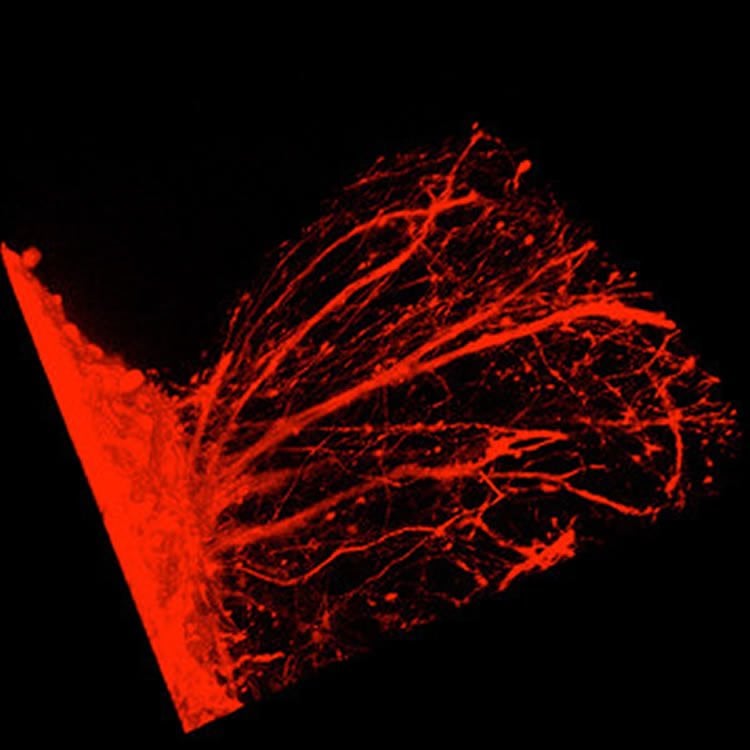Summary: Researchers have created an organoid of the thalamus, which they have fused with an organoid of the frontal cortex in order to study ASD, depression and other neuropsychiatric conditions.
Source: Yale.
In a lab dish, Yale researchers modeled two brain structures and their interactions to shed light on the origins of neuropsychiatric diseases.
In-Hyun Park, associate professor of genetics, and his team created an organoid of the thalamus, a major hub that integrates sensory information and relays it to different areas of the brain. Organoids are created from stem cells to mimic brain areas and assess their function. The lab was interested in the thalamus because it has been implicated in several psychiatric disorders. The thalamic organoid was then fused with an organoid of the frontal cortex, the seat of higher cognitive function.
“Right now we are trying to utilize the thalamic organoid to study epilepsy, autism spectrum disorder, schizophrenia and even depression. With many of these diseases, people have found that there are some defects in the coritco-thalamic connectivity, as well as microstructural changes in the thalamus.”

By creating organoids from cells taken directly from patients, the specifics of the structural changes underlying each disease could be discovered and personalized treatments developed.
Source: Amy King – Yale
Publisher: Organized by NeuroscienceNews.com.
Image Source: NeuroscienceNews.com image is adapted from the Yale news release.
Original Research: Abstract for “hESC-Derived Thalamic Organoids Form Reciprocal Projections When Fused with Cortical Organoids” by Yangfei Xiang, Yoshiaki Tanaka, Bilal Cakir, Benjamin Patterson, Kun-Yong Kim, Pingnan Sun, Young-Jin Kang, Mei Zhong, Xinran Liu, Prabir Patra, Sang-Hun Lee, Sherman M. Weissman, and In-Hyun Park in Cell Stem Cell. Published February 21 2019.
doi:10.1016/j.stem.2018.12.015
[cbtabs][cbtab title=”MLA”]Yale”Researchers Create Organoid of a Brain Region to Study Cognitive Disorders.” NeuroscienceNews. NeuroscienceNews, 22 February 2019.
<https://neurosciencenews.com/cognition-organoid-brain-10797/>.[/cbtab][cbtab title=”APA”]Yale(2019, February 22). Researchers Create Organoid of a Brain Region to Study Cognitive Disorders. NeuroscienceNews. Retrieved February 22, 2019 from https://neurosciencenews.com/cognition-organoid-brain-10797/[/cbtab][cbtab title=”Chicago”]Yale”Researchers Create Organoid of a Brain Region to Study Cognitive Disorders.” https://neurosciencenews.com/cognition-organoid-brain-10797/ (accessed February 22, 2019).[/cbtab][/cbtabs]
Abstract
hESC-Derived Thalamic Organoids Form Reciprocal Projections When Fused with Cortical Organoids
Human brain organoid techniques have rapidly advanced to facilitate investigating human brain development and diseases. These efforts have largely focused on generating telencephalon due to its direct relevance in a variety of forebrain disorders. Despite its importance as a relay hub between cortex and peripheral tissues, the investigation of three-dimensional (3D) organoid models for the human thalamus has not been explored. Here, we describe a method to differentiate human embryonic stem cells (hESCs) to thalamic organoids (hThOs) that specifically recapitulate the development of thalamus. Single-cell RNA sequencing revealed a formation of distinct thalamic lineages, which diverge from telencephalic fate. Importantly, we developed a 3D system to create the reciprocal projections between thalamus and cortex by fusing the two distinct region-specific organoids representing the developing thalamus or cortex. Our study provides a platform for understanding human thalamic development and modeling circuit organizations and related disorders in the brain.






